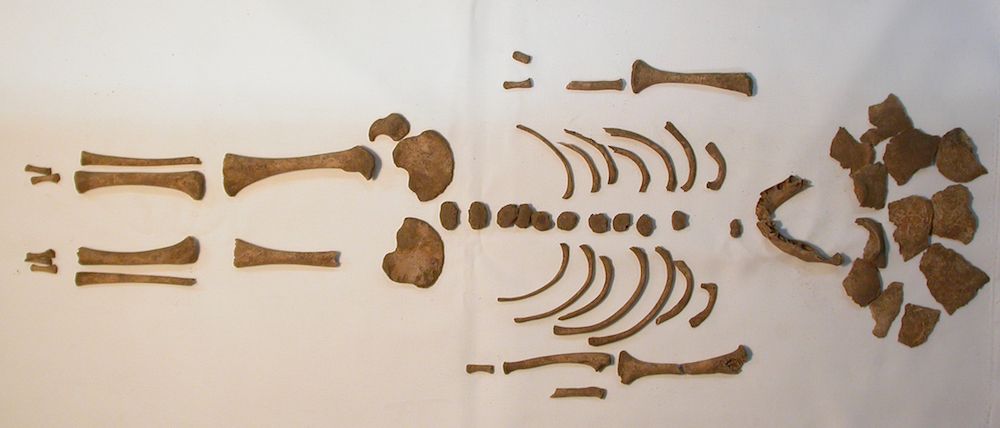Many Roman Children Suffered From Vitamin D Deficiency
New research suggests rickets was common long before the Industrial Revolution, when pollution blocked out sunlight
/https://tf-cmsv2-smithsonianmag-media.s3.amazonaws.com/filer/1b/8c/1b8cd43a-5d5e-497c-8d06-a4df0f3560ad/istock-155282833-1.jpg)
Rickets, a disease caused by vitamin D deficiency, is often associated with England of the Industrial Revolution, when smog-choked skies prevented people from getting vital access to sunlight. But as Mark Brown reports for the Guardian, a comprehensive new study suggests that rickets was deforming the bodies of Roman-era children long before industrialization.
Vitamin D, which is made in the body when the skin is exposed to sunlight, is vital to human health. It helps the gastrointestinal tract absorb calcium and phosphorous, which in turn ensures the normal mineralization of bones. When children don’t get enough vitamin D, they wind up with rickets. Their bones become soft and weak, leading to stunted growth and deformities like bowed legs.
Roman physician Soranus was one of the first to remark upon “bony deformities” in infants in the first and second century. He noted that infants in Rome suffered from these deformities more often than infants in Greece. To find out just how prevalent the disease was in ancient times, researchers from Historic England and McMaster University in Canada studied 2,787 skeletons from 18 cemeteries located across the Roman Empire, from southern Spain to the north of England. The skeletons dated from the first to sixth centuries A.D.
The researchers' study in the American Journal of Physical Anthropology found evidence of rickets in more than one in 20 ancient children. Overall, the rate of rickets in children was 5.7 percent, according to CNN’s Ashley Strickland. Residual rickets was seen in the remains of 3.2 percent of adults. These results indicate that vitamin D deficiency was “not as bad” in Roman times as during the Industrial Revolution, Historic England notes in a statement, but it was still a serious problem.

Perhaps unsurprisingly, rickets appears to have been more common in northern parts of the empire—like England—than it was in Mediterranean regions, where the sunshine is much stronger. But because the prevalence of rickets was so high in small children (most of the affected skeletons were children three years of age and younger), researchers suspect that something else was at work. In colder climates, they theorize, parents may have deliberately kept their babies inside and inadvertently stopped them from getting direct sunlight.
“Being indoors away from sunshine was probably a key factor,” Simon Mays, a human skeletal biologist at Historic England, says in the statement.
During the 19th and early 20th centuries, rickets was less common in the countryside, away from the polluted skies that hovered over urban centers. For the most part, this wasn’t true of the Roman era; the same rates of vitamin D deficiency were seen in country cemeteries and in the burial sites of more crowded towns, likely because Roman towns were still relatively small. There was one notable exception, however. At a cemetery near Ostia, once a bustling port city in Italy where many people lived in multi-story apartment buildings, a high number of skeletons showed signs of rickets.
“Living in apartments with small windows, in blocks that were closely spaced around courtyards and narrow streets, may have meant that many children weren’t exposed to enough sunlight to prevent vitamin D deficiency,” Megan Brickley, a bioarchaeologist at McMaster University and the lead investigator of the project, said in the Historic England statement.
Today, we know that city life can affect our health, and mostly not for the better. With this new study, it seems that as early as 2,000 years ago, the conditions of urban living were already having a detrimental effect on the human body.